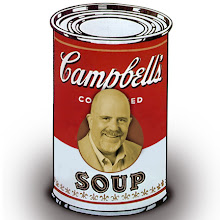Blogging note: I am using my personal blog as a landing page for my San Antonio Express News blog about the upcoming TASA program, April 30 at 11:30. For the rest of the story, please go to www.mysa.com/matt_scherer.
Question: What was you role with the formation of Brooks City Base and how were you selected for that role?
Mark Frye: I started off as a volunteer technical advisor to the Brooks Opportunities Task Force, which was chaired by Bob Sanchez on behalf of Mayor Howard Peak . Howard had asked Bob to see “what could be done differently” to reduce costs at Brooks, which had been put on the BRAC 1995 list but was taken off. I helped develop the overarching transfer and leaseback concept (including helping to author the enabling legislation), conducted the Brooks Visioning Session on behalf of the City of San Antonio and was a contractor to the Air Force from January 2000 through 2003. We provided program management support, facilitated negotiation of the real estate transaction between the Air Force and the City of San Antonio (subsequently the Brooks Development), wrote the master plan for the Development of Brooks (required by the legislation to be submitted to Congress by the Secretary of the Air Force), helped negotiate the cooperative agreement that initially existed between the Air Force and the BDA and we also helped the BDA with the transition of the utility systems. It was a busy time for me!
Question: How long were you working with the Brooks City Base project?
Mark Frye: I supported the Brooks City-Base project in one form or fashion from late 1997 until 2004.
Question: What was the most challenging aspect of the project?
Mark Frye: Getting buy in from some (on both the Air Force and City side of the project) who initially did not support the concept of transfer and leaseback.
Question: Why did some people not support this project?
Mark Frye: The City staff had concerns about costs. The Air Force staff had concerns about security and lack of ownership of the property. There were concerns about the appraised value and how consideration would be realized.
What did you do to overcome it?
Mark Frye: First, we had the solid support of the senior leaders on both sides. That helped. Second, we established the “City-Base Agreement Team” or CBAT, which met every Friday afternoon on 62 separate occasions. It took only 10 sessions or so to come up with a non-binding Memorandum of Agreement detailing how the deal would work. The rest of the sessions were needed to hammer out the details so that the lawyers could create the binding documents. Had everyone been in favor of the project at the outset, it would have taken much less time to negotiate the deal.
Question: What was the most rewarding aspect of the project?
Mark Frye: Knowing that the economic development originally envisioned by Bob Sanchez and me has already occurred. I suggested that the most critical aspect from the community’s standpoint was the “defederalization” of the property to allow economic development to proceed. Transfer of ownership from the Air Force to the city accomplished that. I was rewarded that Congress saw fit to enact the legislation that created City-Base.
Why was that important to the project?
Mark Frye: Just look at the economic development that exists at the corner of Goliad and Military Drive that was not previously possible and you’ll know why.
Where Your Legal Publishing Lives Matters More in the Age of AI
-
I’ve been noodling on something of late. Arising out of what AI is bringing
to legal publishing. For the last twenty years lawyers and law firms have
loo...
1 week ago




No comments:
Post a Comment